Sun Beetle (Pachnoda marginata aurantia)|Nigeria
The beetles are sometimes used as food for terrarium animals(animals in micro habitat).
An adult sun beetle sizes between 20–30 mm, and the larvae are just very small when they are hatched, but it can grow as long as 60 millimeters. (2.36 inches). Another name for the sun beetle is Congo chafer beetle.
Scientific classification of Sun beetles
| Kingdom: | Animalia |
|---|---|
| Phylum: | Arthropoda |
| Class: | Insecta |
| Order: | Coleoptera |
| Suborder: | Polyphaga |
| Infraorder: | Scarabaeiformia |
| Family: | Scarabaeidae |
| Genus: | Pachnoda |
| Species: | P. marginata |
| Subspecies | aurantia |
Description
Pachnoda marginata comes in nine sub-species. The three common ones are:
✓* Pachnoda marginata auranti
✓* Pachnoda marginata marginata and
✓* Pachnoda marginata peregrina
with ranging colours variety. E.g
Pachnoda marginata aurantia: This comes from orange to a yellow-orange and some of them having a hue gradient towards the middle.
When I found it in my work environment, it was amazing to behold and unable to hold myself from this nature's beauty, I stretched my hand with gloves on so that I can feel it's tapping six legs slowly moving.
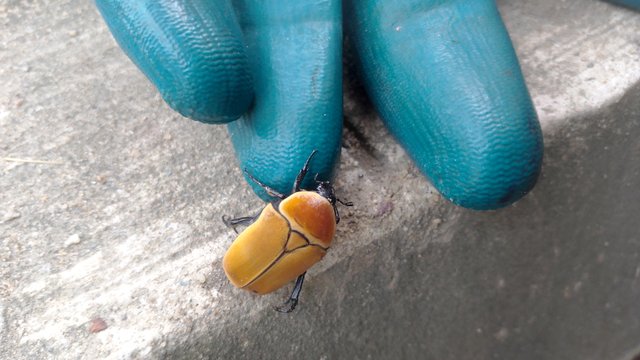 Pachnoda marginata aurantia(handling with my gloves)
Pachnoda marginata aurantia(handling with my gloves)
Pachnoda marginata marginata: It is normally red or sometimes crimson with little changes between individuals specie. The third common;
Pachnoda marginata peregrina: This being the more common amongst the sub-species. It is pale yellow(or orange) with brown spots: one spot being on the thorax, and two spots (each being on elytra on each wing).
List of sub species and year of discovery
| Subspecies | Year of discovery | discoverer |
|---|---|---|
| Pachnoda marginata aurantia | 1790 | by Herbst |
| Pachnoda marginata cerandi | 1984 | Rigout |
| Pachnoda marginata fernandezi | 1984 | Rigout |
| Pachnoda marginata marginata | 1773 | Drury |
| Pachnoda marginata mirei | 1963 | Ruter |
| Pachnoda marginata murielae | 1987 | Rigout |
| Pachnoda marginata perigrina | 1906 | Kolbe |
| Pachnoda marginata rougeoti | 1992 | Rigout |
| Pachnoda marginata tunisiensis | 1984 | Rigout |
Reproduction and Life cycle
After the male mate with the female, the female lays an egg in a moist ground, which hatches after a short period of time into a larva that feeds voraciously(insatiable consumer) on rotten fruit and decomposing leaves for 2 to 5 months.
The larvae are white grubs and live underground before they transform into pupa. When the larva reaches maturity, it pupates for many weeks, and then finally transforms into an adult beetle. Therefter, it will live as an adult for several months.
But it is not all the larvae that survive the pupation period, several of them will die before molting into a pupa form. The adult beetle normally feed on wood, ripe and rotten fruits.
Life as pet/Habitat
Pachnoda marginata is an easy beetle to keep, requiring a terrarium(a micro habitat) with a lid (as it can fly out), a layer of moist ground, something to climb on, a lamp to provide warmth environment and food such as apples, bananas and variety of other fruits.
The larva join in eating leaves and other plant waste to survive. When rearing this beetles as a pet, it is important to check that coniferous material does not mix in the substrate for these beetles, because it may harm their larvae.
Though, I haven't reared it before, this slow moving beetle which pretends to be death when touched is an interesting and a cleaner pest to keep.
I am inviting my friends @akareen, @manuelhooks, and @udyliciouz to think of that observations of theirs in the insects' world and share with us.
While extending thanks to @joslud and the CCS community for this forum.
All photos captured by author with NokiaC30
Research
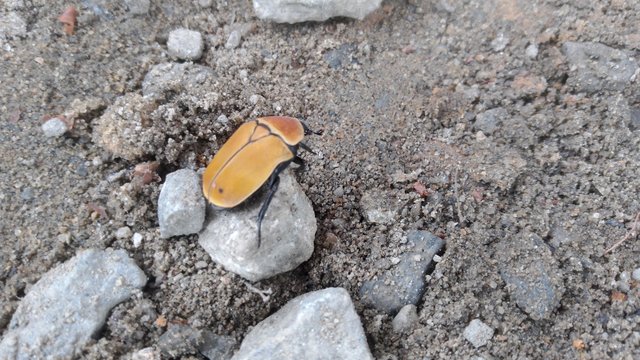
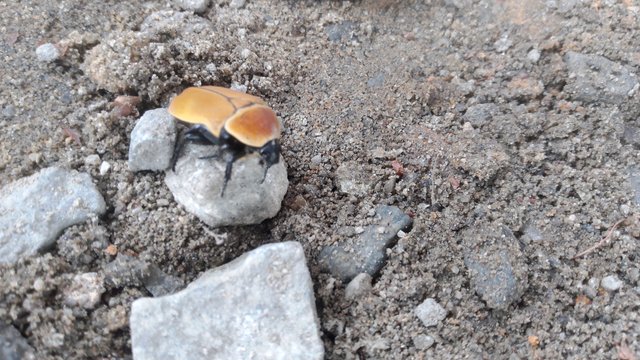
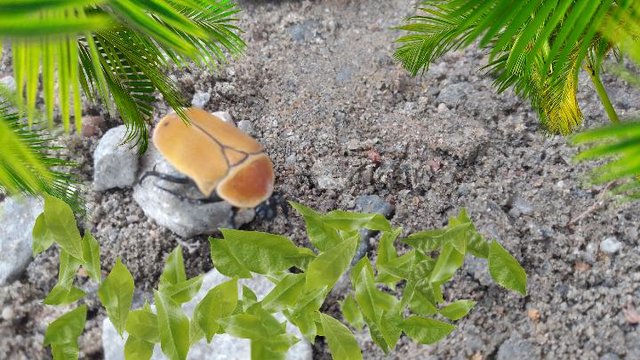
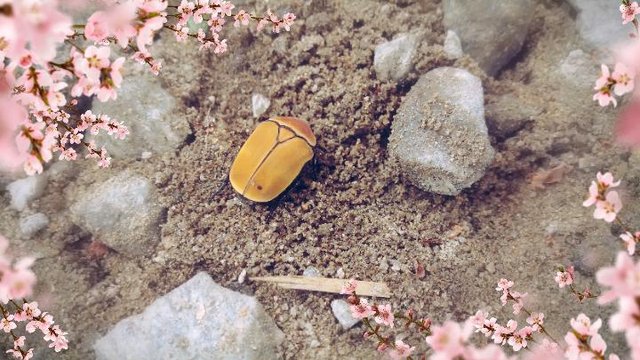
Actually my first time seeing such beetle, beautiful and amazing body
0.00 SBD,
0.02 STEEM,
0.02 SP
Yes, It is very captivating.
I don't know the Local name for it. Do you have any idea?
X-link
https://x.com/rubees4life/status/1969664366510240218
Welcome. 🦗🦋🕷Entry N° 3
Meet Eco-Lens Map
The video was also incorporated into the map
Ok
Here is your content summary:
By improving the marked items you could get Higher Votes!
Curated by @alejos7ven
Thanks for the assessment and upvote!
You have shared a wonderful type of photography. I learned about such insects after reading your post. I really liked your post. Thank you for participating in the contest.